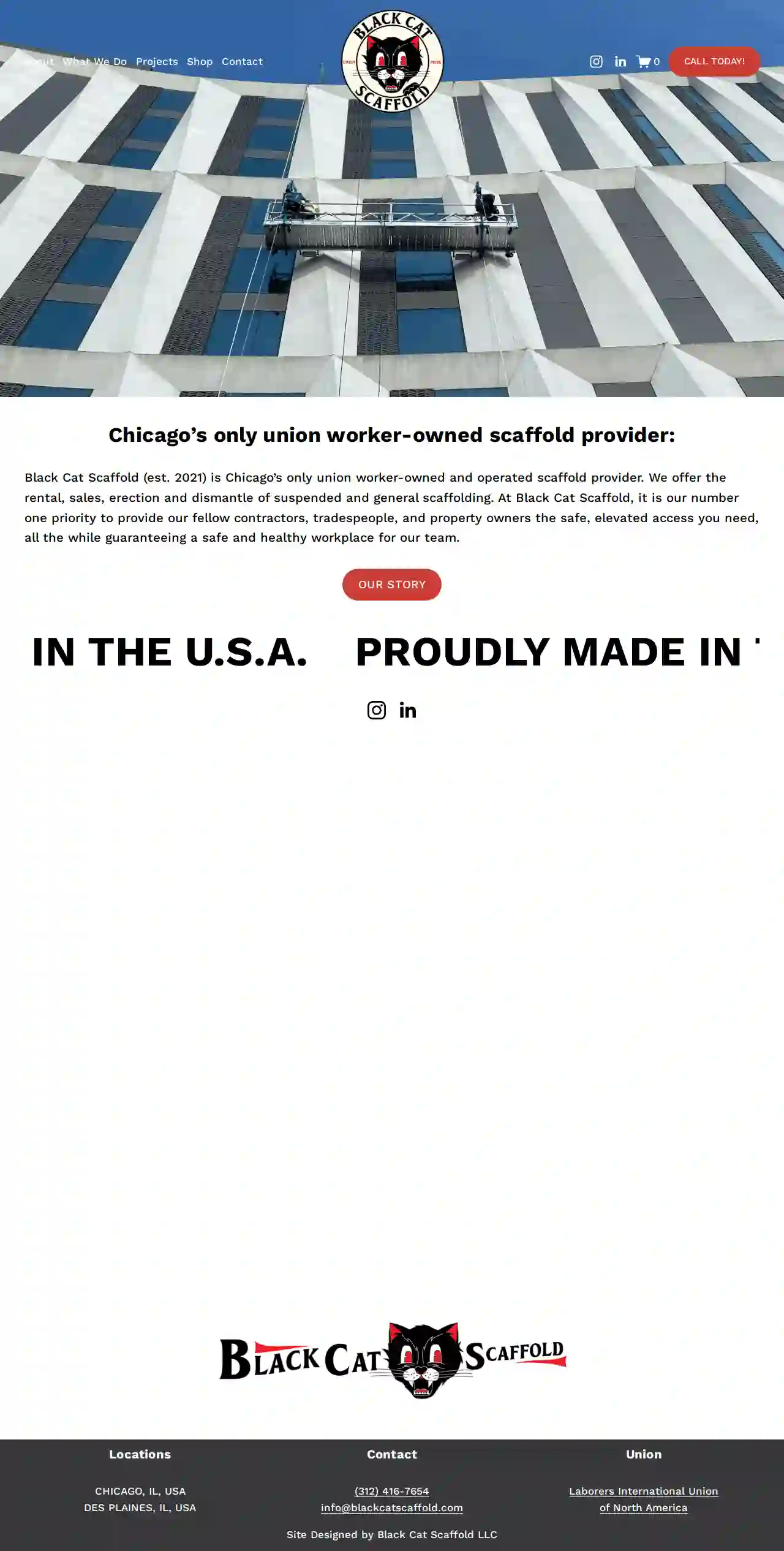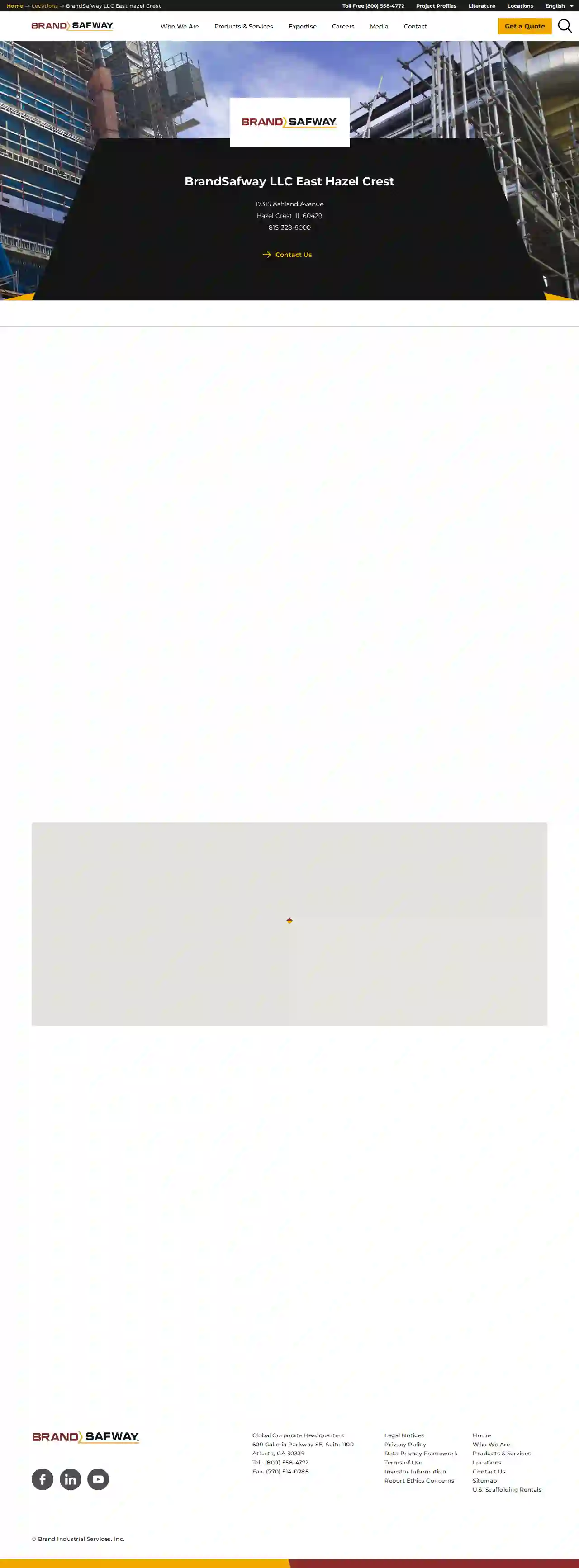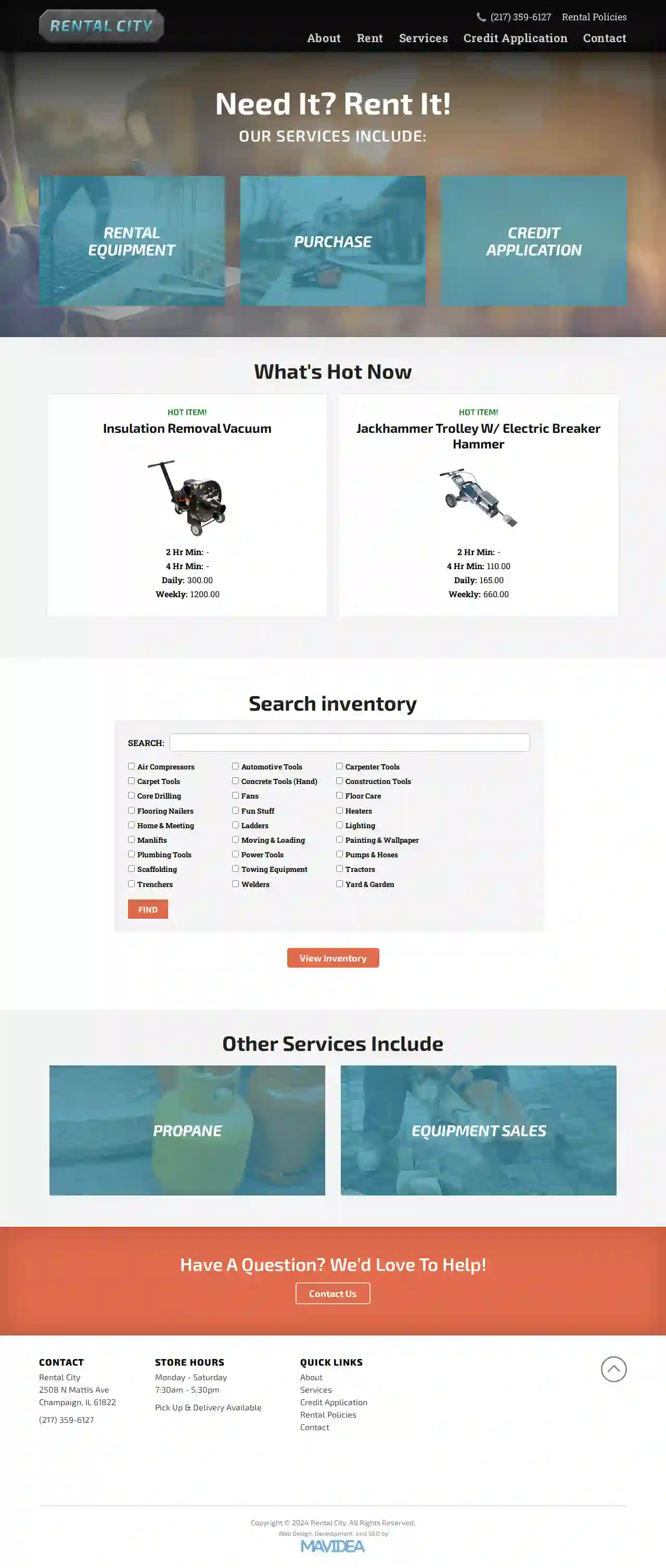Scaffolding Companies Countryside
Top Construction Scaffolding in Countryside
Receive multiple Scaffolding Company quotes for your project today! Compare profiles, reviews, accreditations, portfolio, etc... and choose the best deal.

Chicago Scaffolding Inc.
4.331 reviewsChicago, Illinois, 4824 W. Lake Street, 60644, USChicago Scaffolding Inc. (CSI), family owned and operated since 1988, has a rich history of experience and a family tradition of hard work and dependability. CSI prides itself on the core belief of providing exceptional service, quality, and safety to all clients. With a strong commitment to long-term professional relationships, we prioritize 100% customer satisfaction.
- Services
- Why Us?
- Accreditations
- Our Team
- Testimonials
- Gallery
Get Quote
JC Licht Benjamin Moore Paint & Decor Store Addison
4.7139 reviews1500 N. Addison Ave., Addison, 60102, USShop JC Licht Online or at one of our 48 locations in Chicagoland. Your local, neighborhood Benjamin Moore dealer. Our Story JC Licht has been serving the Chicagoland area for over 100 years. We are a family-owned and operated business that is committed to providing our customers with the best possible service and selection. We offer a wide variety of Benjamin Moore paints, stains, and finishes, as well as a full line of window treatments, wallpaper, and hardware. We also offer a variety of services, including color consultations, in-home estimates, and professional installation. Our Mission Our mission is to provide our customers with the best possible experience. We want to make sure that you are happy with your purchase and that you feel confident in your decision. We are committed to providing you with the highest quality products and services, and we are always here to answer your questions and help you find the perfect solution for your needs. Our Team Our team is made up of experienced professionals who are passionate about helping you create the home of your dreams. We are committed to providing you with the best possible service and we are always here to answer your questions and help you find the perfect solution for your needs.
- Services
- Why Us?
- Gallery
Get Quote
Black Cat Scaffold
52 reviewsChicago, USBlack Cat Scaffold (est. 2021) is Chicago’s first union worker-owned and operated scaffold provider offering the rental, sales, erection and dismantle of suspended and general scaffolding. At Black Cat Scaffold, it is our number one priority to provide our fellow contractors, tradespeople, and property owners the safe, elevated access you need, all the while guaranteeing a safe and healthy workplace for our team. As an American, minority-owned (MBE Certified), small business, we offer superior client focus and competitive pricing. Unlike most in our local industry, Black Cat Scaffold offers majority American-made swing stage and scaffold equipment through our US (Ohio) manufacturers. At Black Cat Scaffold it is our belief that when union laborers have ownership in the business they work for, they are able to provide top tier services and expertise. With a collective 25 years of experience in the Chicago Building Trades, this is our pledge to every client. Thank you for considering Black Cat Scaffold for your future access needs!
- Services
- Why Us?
- Accreditations
- Gallery
Get Quote
Prime Scaffold Inc
4.19 reviews1220 North Ellis, Bensenville, 60106, USPrime Scaffold has been planning, designing, engineering and installing scaffolding systems in the Chicago metropolitan area for over 35 years. With a team of fully engaged and well-trained installers, they provide innovation, attention to detail, safety and excellent customer service. Their expertise meets specific project needs, working on large and small projects for local buildings, museums, airports, ballparks, skyscrapers and famous landmarks. They are OSHA compliant and have experience with complex projects such as the Garfield Park Conservatory and 401 North Michigan Avenue.
- Services
- Why Us?
- Gallery
Get Quote
BrandSafway LLC East Hazel Crest
123 BrandSafway Blvd, East Hazelcrest, 12345, USBrandSafway is a leading provider of access solutions, including scaffolding, aerial work platforms, and forming and shoring equipment. With a strong commitment to safety, quality, and customer satisfaction, BrandSafway offers a wide range of services tailored to meet the unique needs of clients across various industries. Their team of experienced professionals is dedicated to delivering innovative solutions that enhance efficiency and productivity, ensuring successful project outcomes.
- Services
- Why Us?
- Accreditations
- Our Team
- Testimonials
Get Quote
Bracing Systems Construction Supplies and Equipment
4.329 reviewsHanover Park, 4N350 Old Gary Ave, 60133, USWe understand your challenge: To get all your equipment and supplies reliably and on time, while maintaining good profit margins. As your most reliable source of construction equipment and contractor supplies, Bracing Systems can supply your company with the products to get your job done right and under budget. Whether you are a general contractor, masonry contractor, concrete contractor or a contractor in another specialized trade, we stock it for customer pick up or can deliver it right to the job site. Our service department has a huge inventory of parts in stock to repair your Lull, Mustang, JLG, Pettibone, or Manitou Forklift, Essick Mixer, Hydro-Mobile Scaffolding, Stihl Power Equipment, Multiquip Compactors /Troweling Machines and many more brands of construction equipment. We offer convenient customer pick up at our 2 suburban locations or excellent on time delivery to your jobsite.
- Services
- Why Us?
- Gallery
Get Quote
MVC Painting
4.976 reviews800 E Northwest Hwy, Suite 750, 800 E Northwest Hwy Suite 750, Palatine, 60074, USWelcome to MVC Painting, a full-service painting company with over 15 years of experience in making our client's home improvement dreams become a reality. Our team of skilled professionals is dedicated to providing high-quality workmanship and customer service. We offer a wide range of services, including interior/exterior painting, drywall installation and repair, power washing, and more. With 100% customer satisfaction guaranteed, you can rely on us to get it right the first time. We have 5-star ratings from hundreds of customers just like you.
- Services
- Why Us?
- Gallery
Get Quote
International Equipment Inc
25218 S State St, Crete, 60417, USInternational Equipment, Inc. is a leading supplier and installer of high-quality scaffold equipment that enables your crews to work productively and safely at heights. Wherever you need your scaffolding to take you International Equipment has the right equipment for your project. Servicing all of the Midwest, International Equipment responds quickly to the needs of our customers, even during emergencies. We are a devoted team committed to providing the right product for your project with a personal touch that many larger competitors cannot match. We offer designs in augmented or virtual reality as well as 3D allowing you to see your design as it will appear when installed. You won’t pay for estimator’s guess work or extra rental charges for equipment you don’t need. Parts lists and installation costs are accurate with our estimating systems. With our resources and extensive inventory of equipment we are able to provide you with a variety of options to buy or rent. From project planning and installation of equipment to rigorous safety standards and training, International Equipment is there for you from start to finish.
- Services
- Why Us?
- Gallery
Get Quote
Walmart Supercenter
3.92600 S Eastwood Dr, Woodstock, 60098, USWelcome to Walmart! Walmart is a leading retailer offering a wide variety of products and services to customers across the globe. We strive to provide our customers with the best possible shopping experience, offering competitive prices, a vast selection of merchandise, and convenient shopping options. Our mission is to help people save money and live better, and we are committed to providing our customers with the best possible value. At Walmart, we believe in the power of community and are dedicated to supporting the communities we serve. We are proud to be a part of the Woodstock, IL community and are committed to providing our customers with the best possible shopping experience.
- Services
- Why Us?
- Gallery
Get Quote
Rental City Inc
4.5109 reviews2508 N. Mattis Ave., Champaign, 61821, USWelcome to Rental City! When you need a project done right, quality tools can be just as important as the people using them. We know you have other choices for your equipment needs. What sets Rental City apart from others is our dedication to you, our customer, with spectacular customer service. With decades of experience and over 2,000 items available for short-term rental, Rental City is a family owned business dedicated to serving your needs; whether residential or corporate. Rental City began with Mac D. Drysdale’s commitment to providing the best possible equipment in impeccable condition to benefit the greater Champaign community over 60 years ago. Today, we strive to offer the best product catalog, most convenient solutions, and the most effective and pleasant customer service available. We look forward to the opportunity of serving your family or business, and are here to help you get the job done.
- Services
- Why Us?
- Gallery
Get Quote
Over 2,353+ Scaffolding Businesses registered
Our scaffolding contractors operate in Countryside and surroundings!
ScaffoldingHQ has curated and vetted the Best Scaffolding Businesses in and around Countryside. Find a top & reliable business today.
Frequently Asked Questions About Scaffolding Companies
- Communicate with the Scaffolding Company: Clearly express your concerns about potential damage to landscaping, structures, or utilities.
- Clear the Area: Remove any valuable or fragile items from the work zone.
- Protect Landscaping: Cover plants, shrubs, and lawns with tarps or protective sheeting.
- Mark Underground Utilities: Ensure underground utilities (water lines, electrical cables) are marked and avoided during installation.
- Supervision: If possible, be present during erection and dismantling to monitor the process.
- Regulations: Local regulations often specify minimum inspection intervals.
- Project Type and Duration: Long-term projects or those in challenging environments may require more frequent inspections.
- Weather Conditions: Severe weather (storms, high winds) can necessitate additional inspections.
- Any Alterations or Modifications: Any changes to the scaffolding structure require re-inspection.
- Traditional and highly versatile.
- Components (tubes, clamps, boards) are assembled on-site.
- Adaptable to complex shapes and structures.
- Requires skilled labor and more time for erection.
- Pre-engineered, modular components.
- Faster and easier to erect.
- Often has higher load capacities.
- May be less versatile for complex shapes.
- Tube and Clamp Scaffolding: A traditional and versatile system using individual tubes and clamps. It's highly adaptable but requires more time to erect.
- System Scaffolding: Pre-engineered systems with modular components that fit together quickly. They offer speed and efficiency, especially for larger projects.
- Suspended Scaffolding: Hung from a roof or overhead structure, ideal for high-rise buildings or areas with limited ground access.
- Mobile Scaffolding: Mounted on wheels, allowing easy movement around a worksite. Suitable for tasks like painting or plastering.
- Specialized Scaffolding: Cantilever scaffolding, rolling towers, and other specialized systems cater to specific needs.
How do I protect my property from damage during scaffolding erection and dismantling?
How often should scaffolding be inspected?
What is the difference between tube and clamp scaffolding and system scaffolding?
Tube and Clamp Scaffolding:
What are the different types of scaffolding?
How do I protect my property from damage during scaffolding erection and dismantling?
- Communicate with the Scaffolding Company: Clearly express your concerns about potential damage to landscaping, structures, or utilities.
- Clear the Area: Remove any valuable or fragile items from the work zone.
- Protect Landscaping: Cover plants, shrubs, and lawns with tarps or protective sheeting.
- Mark Underground Utilities: Ensure underground utilities (water lines, electrical cables) are marked and avoided during installation.
- Supervision: If possible, be present during erection and dismantling to monitor the process.
How often should scaffolding be inspected?
- Regulations: Local regulations often specify minimum inspection intervals.
- Project Type and Duration: Long-term projects or those in challenging environments may require more frequent inspections.
- Weather Conditions: Severe weather (storms, high winds) can necessitate additional inspections.
- Any Alterations or Modifications: Any changes to the scaffolding structure require re-inspection.
What is the difference between tube and clamp scaffolding and system scaffolding?
Tube and Clamp Scaffolding:
- Traditional and highly versatile.
- Components (tubes, clamps, boards) are assembled on-site.
- Adaptable to complex shapes and structures.
- Requires skilled labor and more time for erection.
- Pre-engineered, modular components.
- Faster and easier to erect.
- Often has higher load capacities.
- May be less versatile for complex shapes.
What are the different types of scaffolding?
- Tube and Clamp Scaffolding: A traditional and versatile system using individual tubes and clamps. It's highly adaptable but requires more time to erect.
- System Scaffolding: Pre-engineered systems with modular components that fit together quickly. They offer speed and efficiency, especially for larger projects.
- Suspended Scaffolding: Hung from a roof or overhead structure, ideal for high-rise buildings or areas with limited ground access.
- Mobile Scaffolding: Mounted on wheels, allowing easy movement around a worksite. Suitable for tasks like painting or plastering.
- Specialized Scaffolding: Cantilever scaffolding, rolling towers, and other specialized systems cater to specific needs.